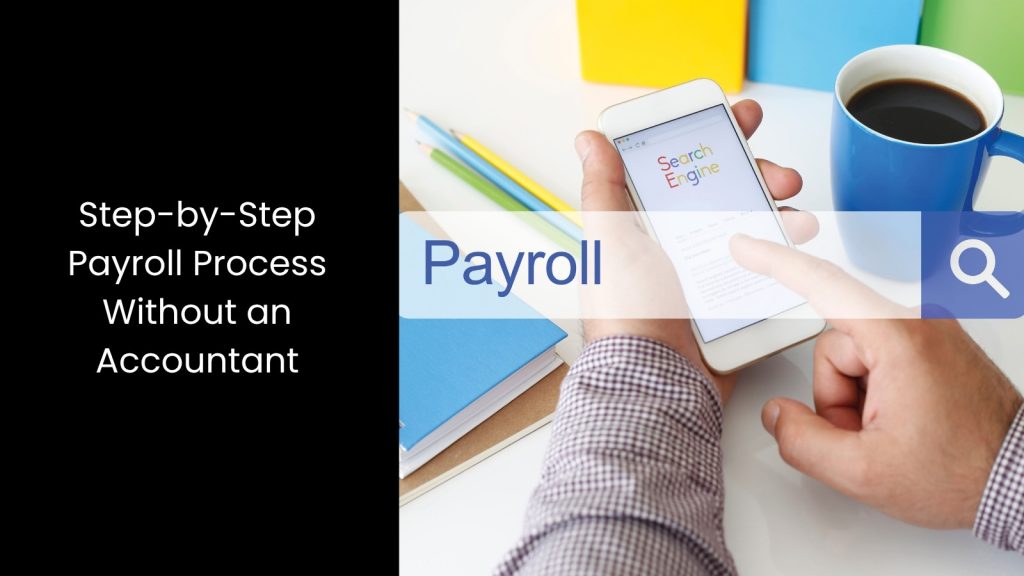Every small business in the world needs to handle payroll correctly to stay legal and maintain team trust. This is no exception when it comes to Singapore. Still, many business owners struggle when they try to do payroll without an accountant’s help. Confusion over CPF contributions, taxes, and record-keeping normally turns into delays or costly errors. That is why understanding how to do payroll for your small business makes such a difference.
In this article, learn how to do payroll for your small business in Singapore without hiring an accountant.
We will explore
Understanding Payroll Basics for Small Businesses in Singapore

- Payroll means more than just paying salaries. It includes every step of calculating, documenting, and reporting what a business pays its employees.
- Small business owners need to understand payroll so they can stay out of trouble and keep their workers happy. The main parts of payroll include the salary, which covers basic pay, bonuses, and any overtime. Employers also need to handle CPF contributions for employees, which means setting aside a portion of the salary for the employee’s Central Provident Fund account every month. This helps employees save for retirement, housing, and healthcare.
- Then there are taxes, like income tax reporting through IRAS, and leave entitlements, such as annual leave, sick leave, and maternity or paternity leave, which employers must track properly. In Singapore, the rules from the MOM, CPF Board, and IRAS shape how payroll works, and business owners must follow them to avoid fines or legal problems.
- Employers must issue itemised payslips, pay CPF on time, and submit employee income details each year. This full process forms the foundation of the Singapore payroll guide, and it helps in paying employees legally in Singapore.
Step-by-Step Payroll Process Without an Accountant

Step 1: Collect Employee Details
To start the payroll for small businesses in Singapore, business owners must first collect complete employee details before doing anything else. Every employee in Singapore needs a valid NRIC number, which is the National Registration Identity Card. This number proves the person’s identity and shows whether the employee is a Singapore citizen or a permanent resident.
If the person is a foreign worker, you can use their FIN number instead. You also need each worker’s CPF number, which links to their Central Provident Fund account. Without this, you cannot handle the CPF payroll process correctly.
Next, collect accurate bank details so you can pay salaries on time without errors. Make sure you enter the correct name, bank code, and account number. Wrong details can delay payments or create disputes. These records also help you stay on top of payments and avoid problems later. When you keep this information safe and updated, you reduce payroll errors and protect your company’s financial health.
Processing payroll starts with solid records, and this step sets the foundation for everything that follows. If you skip this part or get it wrong, you might pay someone incorrectly or face compliance issues down the road.
Step 2: Calculate Gross Salary and Deductions
After collecting employee details, the next part of the payroll mechanism for small businesses in Singapore is to calculate each employee’s gross salary and apply the correct deductions. The gross salary includes monthly pay, overtime, bonuses, and allowances.
Since you need to keep things accurate, use signed employment contracts and time records so you do not guess or make errors. Once you know the gross salary, subtract the CPF contributions for employers and employees. These amounts depend on the employee’s age and citizenship status.
Then factor in other taxes and levies like the Skills Development Levy or Foreign Worker Levy if you hire non-local staff. This stage shapes the fundamentals of processing payroll because it makes sure workers get paid accurately while the company stays within legal rules. If you skip CPF or calculate it wrong, it affects both the employee’s savings and your business’s standing with the CPF Board.
Mistakes in this step can also lead to filing payroll taxes incorrectly, which causes problems with the IRAS. Keep detailed records of each amount so that your payments stay clear and traceable.
Step 3: Generate Payslips
Once you finish your calculations, you need to create proper payslips. This step helps workers understand their salary breakdown and also supports the fundamentals of processing payroll.
The Singapore guidelines say that each payslip must include the employee’s name, pay date, basic salary, overtime, allowances, CPF contributions, and total net salary. Business owners should also include the number of hours worked and any unpaid leave. Make sure to use a template or payroll software so you do not forget important details.
When you issue payslips, you prove that workers get paid accurately, and you avoid misunderstandings. It is not a good idea to guess or estimate; instead, stick to real numbers and signed agreements. Payslips also support the company during audits or disputes.
Many small business owners in Singapore now send epayslips through email or online portals to save paper and time. Whether you use digital tools or not, you must follow the CPF payroll process and keep your information clear and correct.
Step 4: Submit CPF Contributions Monthly
Then comes the time to submit the monthly CPF contributions for employers. This step sits at the heart of the CPF payroll process. The CPF Board requires all employers in Singapore to pay contributions by the 14th of each month.
You must log in to the CPF portal, fill in the details for each employee, and transfer the total amount using the right payment method. Don’t delay or skip this step, as late payments come with fines and interest.
Before you submit, double-check every CPF amount against the employee’s age, wages, and contribution rate. That ensures you do not short-pay or overpay. Keeping your CPF payments on track protects your team’s long-term benefits and keeps you within the law.
The fundamentals of processing payroll include timely CPF filing, and it shows that you take your responsibilities seriously.
Step 5: File Taxes with IRAS
After submitting CPF, move on to filing payroll taxes with IRAS, which is a vital step in the payroll framework. Each year, you must declare your employees’ income using the Auto-Inclusion Scheme (AIS) if you hire six or more staff or volunteer to do so.
IRAS uses these records to calculate personal income tax for your workers, and they expect accuracy. You need to provide total earnings, CPF contributions, bonuses, and other allowances. Go over your payslips and payroll summaries so that you do not miss anything.
If you make errors during this step, it can lead to filing payroll taxes incorrectly, which may trigger audits or fines. Use the IRAS payroll submission guide to walk you through the process if it is your first time.
Remember, tax season does not wait. So, you need to submit your records early to avoid last-minute stress. This way, you do not need to hire an accountant if you stay organised.
Step 6: Keep Accurate Payroll Records
The final step in Singapore’s payroll mechanism is to keep detailed and accurate payroll records. These records include salary slips, CPF statements, IRAS filings, leave applications, employment contracts, and payment summaries.
Store them securely for at least five years as required by law. Keeping strong records supports your fundamentals of processing payroll, helps you track past payments, and shows proof if questions come up. Good records also let you analyse staff costs and check how payroll affects your company’s financial health.
If you misplace or ignore this data, you may struggle during audits or fail to spot errors. You do not need fancy systems to do this right. Even small business owners can use cloud storage or spreadsheets to keep things neat and safe. Accurate records also protect you from paying someone twice or getting into conflicts.
If you plan to continue processing payroll manually, stay disciplined with your tracking. Never treat payroll paperwork as just admin; it is part of paying employees legally in Singapore, and it helps your business run smoothly. When you stick to good recordkeeping, you stay ready for inspections, audits, or any questions from your staff.
Payroll Compliance Tips for Small Business Owners

- Small business owners in Singapore can handle payroll compliance more easily when they use smart tools instead of doing everything on paper. Good payroll software for small businesses helps you stay accurate, save time, and avoid mistakes that cost money.
- Whether you choose local or global tools, many of the best free payroll tools in Singapore offer useful features like CPF integration, IRAS submission, and payslip generation. These features help you follow government rules without stressing over every detail.
- If you want a more customised setup, you can pick an affordable payroll setup in Singapore that fits your business size and budget. You do not need to spend big. There are many options to handle payroll accounting and reporting well at a low cost.
- Some cheap payroll service providers even include templates and reminders, so you never miss a step. When you understand how payroll software works, you can manage payroll meaningfully: paying staff the right amount, on time, with proper records.
Collaborating with All-in-One Tools to Simplify Payroll Management

As you can see, payroll handling is not an easy task, especially if you do not have an accountant. However, it is not an impossible task; on the other hand, if you have the right tools. You do not need to bounce between apps just to pay your team right. With an ERP solution that handles payroll, everything lives in one place, secure, synced, and easy to use. It is also important to go with a sophisticated ERP integration via a reputable software provider to avoid unnecessary technical issues.

